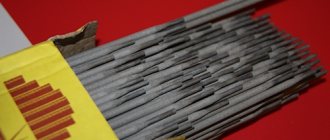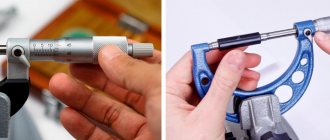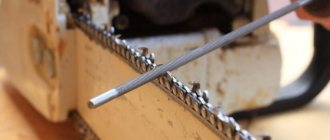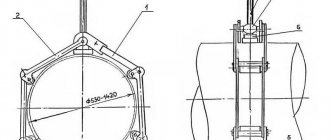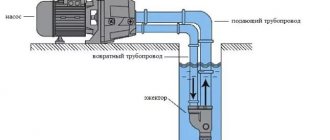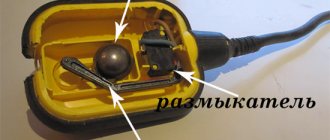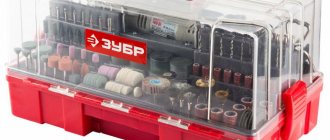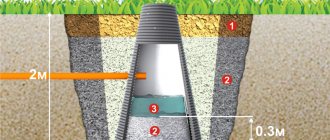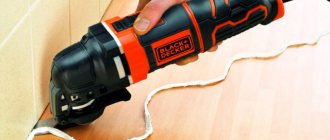What does a micrometer look like and what is it used for?
A small tool designed to accurately measure the dimensions of the smallest parts. It looks like a metal bracket with a screw mechanism and a graduation scale fixed at the top.
Using the device, miniature workpieces are measured, the dimensions of which cannot be determined by other methods. The device is in demand in the foundry and jewelry industries; it is used by turners and millers, model makers and laboratory assistants.
Important! The tool can only measure hard parts because soft materials change size when compressed.
Description and action
The device on the modern market is represented by many types and models, which do not differ significantly in operating principle and operating rules. The only exceptions are electronic and laser devices.
The name of the instrument indicates the dimensional value within which the device is able to determine the size of the part with reliable accuracy. One micron is a very small parameter; in practice, an accuracy of 50 microns is more often used - this is a value whose value can affect the result of assembly work or part settings.
Read also: Computer as an oscilloscope
Methods of measuring with a micrometer - absolute and relative . In the first option, the device connector is attached directly to the surface of the part. Fastening clamps are adjusted in accordance with the geometry of the part being measured. Readings in microns are taken according to measuring scales.
The relative method is based on data taken when measuring objects that are in close proximity to the desired object of measurement. Subsequently, with their help, the required parameters of this object are established in an indirect mathematical way.
What is the operating principle of a micrometer based on?
The device has a fairly simple mechanism of action. Its usage looks like this:
- first check the accuracy of the device, then unscrew the screw so that the part fits between its tip and the heel;
- clamp the desired element using a ratchet until three characteristic clicks are heard;
- look at the readings on the digital, mechanical or dial cabinet of the device.
The device displays the distance remaining between the heel and the screw after clamping the part, and this interval is equal to its size. In this case, the full values are looked at on the scale on the stem of the instrument, and the fractions are determined by the circular sections on the drum. To get the final result, the numbers must be added.
Instructions for use
Before using the micrometer for the first time, you must set it up, namely, set the zero mark. Subsequently, this will need to be done regularly in order to ensure the accuracy of the measurements. To do this, use a micrometer to unscrew the drum so that it rotates freely. You need to twist it and look at it at right angles.
When observing not at a right angle, accuracy cannot be achieved. The task is to ensure that the zero mark on the drum coincides with the standard mark on the micrometer body. When the zero position is reached, the drum can be locked. To do this, hold the cylinder and tighten the nut back. You cannot grasp other parts with a micrometer, otherwise there is a risk of losing all settings.
Each time before using the micrometer, its surface must be thoroughly wiped from dirt and dust, especially for the screw. Even slight contamination affects the accuracy of the results. This applies to both digital and mechanical micrometers.
To measure something with a micrometer, you need to extend the screw to the required length. Next you need to place the part between the different ends of the screw. After this, we begin to tighten the nut and thereby move the screw towards the part. When the screw clamps the part, it will click when further attempts are made to turn the nut. We stop twisting, take out the part and look at the micrometer readings. The digital one gives readings automatically, while the mechanical one needs to look at the scale. The upper left part of the scale is millimeters, the lower left is tenths of a millimeter, the right is hundredths of a millimeter.
The micrometer has a clamp that allows you to fix the instrument and scale in one position. This may be useful when grouping items by size and checking the accuracy of similar parts when rejecting.
What types of micrometers are there?
Since the device is used in a variety of areas, there are quite a few varieties. In particular, micrometers are distinguished:
- smooth;
- lever;
- universal;
- leafy;
- wire;
- pipe;
- prismatic;
- groove;
- tooth-measuring.
There is also a classification of micrometers according to the method of taking measurements; there are mechanical instruments, laser, with a dial or digital scale.
Main varieties
Depending on the length of the movable spindle (screw), micrometers are classified according to standard sizes. The instrumentation industry produces devices for measuring the size of parts in the ranges:
- from 0 to 25 mm,
- from 25 to 50 mm,
- from 50 to 75 mm,
- up to 500−600 mm.
A number of measuring instruments are additionally equipped with setting gauges to allow the device to be set to the “zero” position.
Micrometers have different types (according to GOST 6507–90) depending on their purpose and design (hand-held and tabletop).
The following types of measuring micrometers are widely used::
- smooth - designed to measure external dimensions;
- sheet - for the thickness of tapes and sheets, equipped with a dial;
- pipe - for the thickness of the pipe walls;
- wire - for wire thickness;
- micrometer heads - for measuring movement;
- Gear gauges - measure the normals of cylindrical gears, which is important for quality control during their production.
Read also: Connection diagram for power supply for LED strip
In addition to those shown in GOST, other types of tools are used:
- lever micrometers - the operating principle of the device is based on the mechanism of measuring linear quantities using the method of comparisons and evaluations (MRI model);
- prismatic micrometers - for measuring the outer diameter of a tool with many blades (MTI, MPI, MSI series);
- micrometric bore gauges - for measuring the internal parameters of various parts (NM, NMI);
- groove;
- thread measuring;
- universal and others.
Electronic instrument
For high-speed measurements, instruments are designed with an electronic “digital” display, the value of the measurements taken is displayed on a separate display (for example, a modified micrometer MK - MKTs).
Modern micrometers with digital display have a number of specific advantages:
- The internal electronic filling of the device and digital display greatly facilitates the work associated with measurement and saves time spent on reading results. The indicator board of the electronic micrometer displays all received measurement data, and, as a rule, there are no problems with data acquisition.
- The tangible advantage of digital devices (GOST 6507−90) is the price of scale divisions of 0.001 mm and small values of the permissible error limit.
- Models of electronic micrometers facilitate the implementation of not only absolute, but also relative measurements.
- It is possible to set the device to zero from any position in the measurement range. This property is useful for technical control, product grading, and complex measurements.
- Sorting and quality control of parts can be really speeded up if the permissible limit values of the measured values are stored in the micrometer’s memory. Modern progressive models of micrometers have such functionality.
- The latest modifications of the devices have connectors that allow you to display statistical measurement data using a computer. This function is useful when analyzing a series of measurements and for maintaining test records.
- The versatility of the digital device when using is also a plus; it makes it possible to use both the metric and English measurement systems.
A noticeable disadvantage of digital measuring devices is unreliability in operation. All digital equipment requires special care. The mechanical model of the micrometer will not suffer much damage if dropped, although this will affect its ability to work in the future. With digital analogue, there is a risk of immediate loss of operation, repair costs or even replacement of the device.
An inexpensive digital micrometer from an unknown manufacturer may be subject to measurement errors. Such devices actually do not comply with GOST; however, often digital models manufactured in accordance with the standard have frequent malfunctions. The tool requires replacement after the warranty period has expired.
Laser micrometer
The laser micrometer is the latest universal measuring tool. The main difference between the device and mechanical analogues is the need for an autonomous power source.
The micrometer is used for non-contact measurements of linear quantities, determination of gaps, width, thickness, internal diameters in technological objects. Using a laser device, the levels of bulk substances are measured and the position of the object is monitored.
Due to its high cost, laser pressure gauges are not yet in great demand in private circles.
As one of the most high-precision instruments, the device has found its application in many areas of modern industry and construction. Electronic support makes such a device quite fragile and expensive and places increased demands on its careful operation.
Types of micrometers by area of application
The requirements are different in different areas; in some areas very precise instruments are needed, in other areas miniature or elongated instruments are needed. Therefore, it is customary to distinguish several types of micrometer, between which there are noticeable differences.
Smooth micrometer
This type is intended for external measurement of workpieces and parts. In fact, it is suitable for any work except internal measurements; the characteristics and design of a smooth micrometer do not allow the latter. The device consists of a bracket and a screw mechanism with a drum; models within the category differ only in range.
Smooth models are universal and most widespread
Sheet micrometer
Such devices are used to determine the dimensions of very thin workpieces with a wide surface, forged and metal strips, and sheet metal. A standard smooth micrometer may give erroneous readings due to a loose fit. The sheet-type tool is equipped with special round “plates” on the screw and on the heel.
Sheet metal plates increase the contact area with the workpiece
Micrometer for hot rolled metal
A separate type of device is used to measure the thickness of hot workpieces. Maintains a temperature range of 650 degrees; in production, it helps to track the moment when the rental needs to be stopped and the finished part of the required dimensions needs to be picked up.
The micrometer for hot rolled steel does not have a classic bracket, but has a long handle
Micrometer for deep measurement
Such models have a strongly elongated bracket, which allows you to throw the device over the workpiece and measure the thickness in a place far from the edge. Using the tool, the exact parameters of parts with an uneven perimeter and blind holes are determined.
Extended bracket allows you to reach any place with a micrometer for deep measurements
Pipe micrometer
Using a tool, the walls of metal pipes are measured. A special feature of the pipe type device is the trimmed bracket. At its end there is a heel, which is inserted into the pipe, after which the screw is tightened in the standard way.
Important! It is usually impossible to take internal measurements with a smooth micrometer. It only fits into very wide holes due to the classic staple and protruding heel.
A pipe gauge is used to measure the walls of pipes
Wire micrometer
A very compact variety without a pronounced bracket. The tool itself is more like a rod. It is used to determine the dimensions of wire and thin metal rods. The device has a small screw stroke range; it can be carried in a case along with screwdrivers and keys.
Wire micrometer is one of the smallest types
With small lips
Using such a tool, external recesses and grooves in the metal surface are measured. The working parts of the device easily fit into microscopic holes.
The screw and heel of a device with small jaws are very thin
Universal micrometer
This device is equipped with numerous removable tips for measuring a wide variety of parts and workpieces. It is convenient to use, but can give a large error, since if the tip is not tightened sufficiently, a gap occurs. This problem is especially common in budget devices.
A device with attachments can replace several highly specialized varieties
Groove micrometer
The device has no bracket at all. Most of all, a micrometer is similar to a wire micrometer. But unlike the latter, it is equipped with sponge plates for gripping protruding parts of workpieces.
Using a groove device, the thickness is measured in hard-to-reach parts of the part.
Gear micrometer
The device is used to measure hard-to-reach external places of parts and to determine the length of the common normal of grooves, grooves and gears. A design feature is the fixed jaw-plates; other similar types of devices have a slight backlash for them.
A gear tool is similar to a sheet tool, but has smaller plates
Prismatic micrometer
Instead of a heel, there is an angular bracket with attachments made of hard alloys, forming a supporting prism. A device of this type is used to determine the diameter of a multi-blade tool.
The prismatic micrometer can measure three-, five- and seven-blade instruments
Lever micrometer
The device is used for comparative serial measurement of parts. The device is an analogue of a lever bracket, but it is easier to use; it does not require a long time to adjust it to the nominal length gauges.
A lever micrometer has a movable heel moving along the axis, acting on the lever
Micrometer instrument design
The micrometer head is the heart of the micrometer, but it is not visible due to its location inside the instrument barrel. The accuracy of the screw thread shape determines the accuracy of the micrometer. Screw threads are simply the ridges that you feel when you touch the screw. The thread is a helical structure that moves up the screw and converts torque into linear force.
Micrometer screw
The micrometer screw was first invented by William Gascoigne in 17th century England. This was used to measure angular distances between stars in telescopes. The first commercial version was released in 1867 and is still used in every field of science and technology.
Micrometer screw
Very finely cut screw with divisions on the head
For measuring very small linear quantities
The screw is used to move over short distances
The micrometer head is the heart of the micrometer
Applicable in every field of science and technology
The micrometer screw rotates in a stationary micronut
Before starting work, always check the micrometer for damage, as it is an important tool. It is worth spending a little time to calibrate the device. Calibration of your micrometers is essential to accurately measure parts and must be done strictly according to the manufacturer's specifications.
Micrometer device
Measuring edges
The measured objects are placed between the measuring faces; anvil and spindle.
Anvil and spindle
An anvil is a stationary measuring surface that holds parts until the spindle makes contact with the workpiece.
The threaded spindle is the moving measuring surface of a mechanical micrometer.
Micrometer scale
Scale on the sleeve
The scale on the sleeve is the main measurement on the device.
The connection between the thimble line and the coupling displays the measurement result.
First significant digit
A sleeve scale that reads the value from a micrometer scale. The first significant digit of the measurement is taken from this scale. This portion of the measurement is the first value immediately to the left of the thimble.
Thimble
Thimble Measurement Scale
The secondary measurement scale, the thimble, provides the remaining two significant digits of the measurement.
This part of the measurement is the value on the scale, which is aligned with the index line on the sleeve scale.
Index line
Index Line
An index line that runs along the sleeve is used to indicate the value shown on the thimble scale.
Thimble movement
Thimble
When the thimble is turned, the spindle rotates and changes the distance between the measuring edges.
Some thimbles contain a friction drive, which makes it possible to accurately read the size when used by an inexperienced user.
Ratchet
The ratchet increases the spindle speed.
The ratchet increases the spindle speed, so the space between the anvil and the spindle is reduced faster than if a thimble were used.
Using a ratchet reduces the time required to use the device.
Prevents tension
The external instrument's ratchet has a sliding clutch mechanism that prevents excessive tension and helps the user apply a constant measuring force to the spindle, helping to ensure reliable measurements.
Locking device
The locking device stores the measurement
The locking device stores the measurement and the workpiece can be removed before reading the size.
Some micrometers contain a locking nut, while others may have a locking lever.
Bracket
U-shaped frame, supports the anvil and sleeve
The U-shaped frame must be rigid and stable. It supports the anvil and the sleeve.
The micrometer clamp is held by the user during measurements.
Depending on the type of instrument available, micrometer instruments can measure different distances.
- Wire thickness
- thickness of a sheet of paper
- hole diameter
- nail surface length
- slot depth
Standard micrometers will measure objects less than one inch in length.
The correct type of tool is required to measure
Types of micrometers by indication method
Devices are also usually divided according to the type of indication. Some devices allow measurements to be taken in the shortest possible time and do not require additional calculations from the user.
Mechanical
The simplest and most budget devices are equipped with a vernier drum, with which dimensions are taken. The workpiece parameters must be determined using scales printed on the surface of the tool.
When using a mechanical micrometer, the user is forced to calculate the measurement results himself.
Switches
Such devices are equipped with an indicator with a circular scale and a pointer in a closed housing. Many lever and sheet tool models, especially Soviet-made ones, belong to the switch type.
Pointer devices are also called clock devices
Digital
One of the most convenient to use varieties is equipped with an electronic display. The measurement results are displayed on the screen; the user does not need to carry out any additional calculations.
Digital micrometers are used in production, where a series of measurements need to be taken in a short time.
Laser
The most modern and expensive type of device. The measurement results are calculated based on the difference in the deflection of the laser beam, and the instrument displays the finished data on the display. Most often, devices are used in laboratories where extreme accuracy is important.
There is no point in buying a laser micrometer for home - it is expensive, and its capabilities are not in demand
How to use standard, electronic and lever micrometers (instructions)
When using standard and analog micrometers, part measurements are determined by adding the values obtained on the micrometer drums and stems. As you can see, the instructions for using a micrometer look very simple.
Important! Always remember the following rule. If on the lower half of the stem the last visible mark is to the right, then another 0.5 must be added to the resulting value. Schematically it looks like this.
Image No. 3: instructions for reading measurement results
There are much fewer complications when using lever and electronic micrometers.
How does a micrometer work and what main parts does it consist of?
Among the main components of a micrometer are:
- a bracket with a heel protruding inward;
- a screw mechanism attached to the other end;
- drum and ratchet, with the help of which the screw rotates;
- a clamping element on the side that allows you to fix the mechanism in a certain position.
Depending on the design of the micrometer, its main part, the bracket, can be more or less pronounced. The screw and heel are often equipped with special attachments.
The classic micrometer design involves a bracket, drum and ratchet
What is the structure and principle of operation of a smooth micrometer
The operating principle of a smooth micrometer is the simplest. This type of tool is the most common in everyday life:
- All mechanisms of the device are located on the bracket; the role of a fixed stop is performed by a rigidly fixed heel.
- At the other end there is a cylindrical stem with a printed scale, the division value is usually 0.5 mm.
- A screw passes through the inside of the stem, one side extends towards the heel, and the other is rigidly connected to the drum.
- The drum also has a scale with a division value of about 0.01 mm, for counting hundredths and thousandths during measurements.
The drum and ratchet of a smooth type device are usually covered with anti-slip notches.
According to the purpose of a smooth micrometer, when using it, it is necessary to insert the workpiece between the screw and the heel and fix it tightly. The ratchet on the outer end of the drum is responsible for stopping the rotation of the screw after the part is securely fastened. It also prevents the mechanism of the device from being damaged by excessive force.
How does a lever micrometer work?
The design of a lever pointer device is very similar to a conventional one. However, there are also differences. The micrometer device diagram shows that the instrument consists of:
- brackets, in the body of which a lever-gear system for counting is mounted;
- round dial with graduation scale;
- drum and stem attached to a bracket;
- screw and heel, between which the part is clamped.
During measurements, movement from the rod is transmitted using a special lever to a gear mechanism. The latter engages with a small wheel, on the axis of which there is an arrow indicating the measurement results.
A lever micrometer is more reliable than a smooth one, but is more prone to breakage
To retract the measuring rod in the lever mechanism, a button is used that activates the locking device. There is no ratchet in this type of device. It is simply not needed, since a stable and safe measuring force is created without it.
The design and principle of operation of a typical micrometer
A typical micrometer consists of a vice and a block with measuring mechanisms. To carry out the operation, the part is clamped in a vice and held tightly there.
Image No. 1: appearance and design of a typical micrometer
The operating principle of this tool is based on a screw pair. By its step, deviations from zero marks are determined. The values are read from blocks with measuring mechanisms.
This cylindrical part of the micrometer has two scales.
- Spinning. Located on the drum. These divisions indicate fractions of a millimeter.
- Motionless. Located on the stem of the micrometer. There are two scales with different division values (0.5 and 1 mm).
Image #2: micrometer scales
How to choose a micrometer
When choosing a measuring device, you must take into account your own needs and the parameters of the micrometer. There are several criteria that determine ease of use.
Type of micrometer
The devices can be designed for carrying out internal and external measurements, for dense and thin, easily deformable workpieces. Before buying a device, you need to understand for what purpose it will be used.
Measuring range
Different instruments can take measurements in a general range from 0 to 100 mm. Which device to choose depends on the size of the workpieces.
Measurement step
The finer the scale of divisions of the device, the more accurate the results obtained will be. You need to focus on the dimensions of the parts and your own needs.
Advice! The most precise devices are usually needed by jewelers working with microscopic workpieces.
Error
The error value is indicated in the technical data sheet of the device. The lower the indicator, the lower the likelihood of error when taking measurements.
Tool weight
The device should not weigh more than 2 kg, otherwise it will be inconvenient to use. When purchasing, you should also evaluate the comfort of gripping the device. It is desirable that the bracket be equipped with a relief insert.
Example of using a micrometer
So let's look at micrometer measurement using a typical and common example. Let's say you need to measure a drill bit for metal. Even though the drill size is indicated on the shank of the part, there are always errors during production, so we need to determine how small or high it is.
First of all, it is necessary to move the end ends of the micrometer apart. This must be done by rotating the drum. Having spread the ends to the required sizes, little by little you begin to clamp the drill into the device. In this case, it is necessary to clamp not with a drum, but with a ratchet. As soon as you hear three clicks, stop and watch the readings.
Pay attention to the stationary part of the scale. It will indicate the rough size, since the division price here is 1 mm, so we look at the number of whole millimeters of the part (in our case, the drill). Let's say it's about 4 mm. Now, pay attention to the upper scale. It indicates a value of, for example, 0.5 mm. In this case, the marks on this scale are located between the marks on the lower scale. This is necessary so that it is convenient to look at values of 0.5 millimeters. So, for example, we get 4.5 mm.
Now, all that remains is to add up the value indicated on the reel. So, it will show us the value of hundredths of a millimeter. Let's say it points to a value of 17. That means we still have an extra 0.17 mm, so we add that value to 4.5 mm to get the exact value of 4.67 mm. The manufacturer indicates a value of 4.7 mm, so the error was 0.03 mm.
Top 5 best micrometers of 2021
When choosing a reliable and convenient micrometer, it is useful to familiarize yourself with the rating of the most popular models. They are in demand due to their high accuracy, reliability and moderate cost.
Matrix 317255
An inexpensive device made in Germany and assembled in China, it is designed for measurements in the range of 0-25 mm. The error is only 2 microns, the device is optimal for repairmen, modelers and car mechanics. Made of high-quality enameled steel, equipped with thermal insulating linings on the bracket. The heel and tip of the screw are carbide and do not wear out even with frequent use of the device.
You can buy a Matrix micrometer from 840 rubles
Fit 19909
The purpose of a micrometer with an error of 0.01 mm is to use it in a home workshop or in production where laboratory accuracy is not required. Measures thickness within 0-25 mm, features reliable assembly and corrosion resistance. The drum and ratchet are covered with anti-slip grooves. The kit includes a calibration key and a plastic case.
Important! Among the disadvantages, the scales on the stem and drum are too pale; in order to distinguish the readings, you have to strain your eyes.
The average price of a Fit micrometer starts from 900 rubles
Shan MK-25 123738
A tool from the middle price category with a range of 0-25 mm has high accuracy, the error is only 2 microns. Equipped with carbide measuring surfaces with excellent alignment, the scale of the device is clear and clearly visible.
You can buy Shan MK-25 from 2500 rubles
CHEEZ MK-25 0.01
The Russian device of the first class of accuracy takes measurements of 0-25 mm, guaranteeing a low error. The ratchet and drum are covered with deep notches that prevent slipping of hands, and thermal insulating gaskets are provided on the bracket. The description of the micrometer indicates that the heel and screw mechanism are made of stainless steel, and the working surfaces are coated with carbide coating for a perfect fit.
You can buy a CHIZ micrometer from 2000 rubles
Micromar 40 EWRI 4157101
One of the top German-made devices belongs to the professional category. It has a range of 25-50 mm, the degree of accuracy is 0.001 mm. Made of high quality steel with anti-corrosion coating.
The device supports wide customization of measurement parameters and displays results, including in inches. The main feature of the device is the presence of a Wi-Fi module, thanks to which data can be transferred directly to a computer through a special application.
Micromar 40 EWRI is expensive, from 28,000 rubles
Measuring process and readings
At the beginning of work, it is necessary to place the measuring part between the heel of the device and the micrometer screw. Start rotating the drum, taking into account the maximum proximity of the spindle and the object being measured.
When taking measurements, the micrometer is held in the left hand. To avoid heating from body temperature and distorting the results, the device should be held by the insulated part of the bracket .
Measuredly and slowly, the spindle of the device is brought into contact with the surface being measured. It should be twisted counterclockwise relative to the threaded end until the part fits into the gap between the ends. Next, you need to rotate the spindle clockwise until it stops, holding the drum while cutting.
When the stop is reached, the rotation will begin to be accompanied by a crash . The rotation of the micrometer screw should stop and you can start taking readings. The part is released from the clamp by rotating the spindle in reverse. The exact size is measured on the drum using a vernier scale.
Instrument readings. When working to take measurement values with a mechanical device, some skill is required. We start taking readings from the larger digits and end with the smaller ones.
First, let's pay attention to the stem scale on the fixed part of the handle. It contains two scales , which for comfortable perception are located at the stopping position of the edge of the drum; let us fix the value of the lower scale division (for example, 8). It is within sight. This is how the value of the first digital reading is determined.
In the case when the edge of the drum is equal to the division on the upper scale, then after the decimal point it is necessary to put the number 5; if the division is hidden, then the number 0. After that, the scale on the drum is considered, where the hundredths of a millimeter are located, they must be added to the tenths.
Suppose the upper scale did not show a half division, respectively, the measurement value is 8.0 mm. Since the reel with the horizontal stroke rolled a value of 12, therefore, 8.0 + 0.12 = 8.12 mm. If the line is visible on the upper scale of the stem, 8.5 + 0.12 = 8.62 mm.
Table of contents
A micrometer is a universal measuring device that is designed to obtain the linear dimensions of the part being measured. Regardless of whether the relative or absolute measurement principle is used here, they are all produced by the contact method. The scope of measurements for almost all instruments lies in the area of relatively small sizes, since the micrometer itself works with high accuracy, down to thousandths of a millimeter. Depending on the model used, the error can range from 2 to 50 microns. A micrometer is being created in accordance with GOST 6507 90.
The scope of application of the device is very wide, as it is very convenient and practical. It is often small in size, therefore, it can be used both at home and in quality control laboratories, tool workshops, mechanical engineering, carpentry and plumbing workshops. They are used to control the thickness of wires, walls of parts, metal sheets, and so on. Few measuring instruments can operate in such a range with a given accuracy.
Despite the variety of models, each of which is intended for specific purposes, their operating principle turns out to be very similar. It is based on the movement of a screw, which is located along the axis of the device in a nut fixed motionless. The movement is made in proportion to the angle it passes around the axis. A full revolution is displayed on a scale located on the stem. It shows 1mm of distance traveled. The beats are shown on the drum, which shows the data with an accuracy of 0.01 mm. Depending on the specific model, there may be some differences in the data.
The kit often includes standards against which the device can be verified before use. Each range uses its own standards, because the measurement limits of a micrometer can differ several times.
Advantages and disadvantages
It is not for nothing that the micrometer has become one of the most common means for obtaining ultra-precise linear dimensions of parts. The micrometer pitch of 0.01 mm allows the micrometer to be used in a wide variety of applications. Thanks to its small size, it is easy to carry and can always be at hand. Like other mechanical devices, if properly cared for, it can last a very long time. It is easy to calibrate, which should preferably be done before each use. Some modern models can immediately connect to a computer to enter measurement data, simplifying further calculations.
Read also: Brazier from a propane cylinder photo
The difficulty lies in reading the data, since not every person knows how to use a micrometer correctly. There are three scales here, each of which shows its own data, so they need to be added to get the final result. Any micrometer has a limited range of use, which also creates difficulties in use, therefore, sometimes you have to have several devices when it comes to production. The complex design and many parts, although they will improve accuracy and reduce errors, make them practically unrepairable.
Types of micrometers
There are several types of devices that differ in their scope of application, and accordingly have some distinctive features that are more suitable for a particular type of activity. Among them are:
- Gear measuring (micrometer MZ) - it works with teeth located on gears and serves to determine the normal length of a tooth, the modulus of which starts from 1 mm. The upper limit is 50 mm. The kit includes an installation plane-parallel final length measure;
- Pipe micrometer - it is used to determine the linear dimensions of walls in pipes. This is relevant both for quality control during manufacturing and for studying the wear of products;
- Sheet (ML) - used for measuring the thickness of films and sheets. They generally work with fairly small dimensions and have a very high accuracy class;
- Smooth micrometers GOST 6507 90 are the most common type of products that are used in most areas and are used to determine the linear external dimensions of all available parts;
- Lever type (LR) are measuring instruments that have built-in lever-geared indicator devices. This system has high mechanical complexity and consists of many parts. But this greatly simplifies the process of use, therefore, they are used in places where intensive measurement of various parts takes place. The read data is transmitted to the indicator head and displayed on the scale;
- Wire gauges (WM) - they are used to measure diameters in wires, bearings and balls. Not every type can work normally with round objects, but in this case the design features predispose to this;
- Prismatic (MIT, MPI MSI) - they are used for measuring blade tools with three, five and seven working blades from https://www. >
- Groove micrometers (MCN) - micrometers of this type work by determining the distance between parallel grooves and determining the width of each of them. The upper limit of the devices is 50 mm. The kit includes an installation plane-parallel final length measure;
- Thread gauges (MVM, there are both metric and inch micrometers) - they have special pegs inserts in their design;
- Universal (MKU) - devices that have seven pairs of interchangeable heels. Thanks to the presence of a replaceable set, it is possible to measure parts with different configurations;
- For deep measurements (MCG);
- Limit or two-scale (MCP) - used to measure maximum external dimensions;
- For hot rolling (HRP)
- Tabletop - stationary micrometers that are attached to the work table;
- Micrometer for left-handers.
General classification
In general, all measuring instruments of this type can be classified according to the following characteristics and parameters:
- Types of micrometers;
- Lower and upper limit of measurement;
- Dimensions;
- Principle of data display (mechanical or electronic);
- Device accuracy class;
- Scope of application;
- Purpose;
- Design features (tabletop or handheld);
- The presence or absence of additional devices.
Specifications
| Options | MK-25 | MK-50 | MK-75 | MK-100 | MCC-25 | MKTs-50 |
| Ah, mm | 9 | 14 | 14,5 | 15 | 6 | 8 |
| V, mm | 3 | 3 | 3 | 3 | 3,5 | 3,5 |
| C, mm | 28 | 38 | 49 | 60 | 24 | 32 |
| L, mm | 32 | 57 | 82 | 107 | 32 | 57 |
| Upper and lower measurement range, mm | 0-25 | 25-50 | 50-75 | 75-100 | 0-25 | 25-50 |
| Micrometer pitch, mm | 0,01 | 0,01 | 0,01 | 0,01 | 0,01 | 0,01 |
| Approximate error, +-mm | 0,002 | 0,002 | 0,002 | 0,002 | 0,002 | 0,002 |
| Number of interference fringes when deviating from flatness relative to the measuring surface of the device heel, pcs | 2 | 2 | 2 | 2 | 2 | 2 |
| from flatness relative to the measuring surface of the microscrew, pcs. | 2 | 2 | 2 | 2 | 2 | 2 |
| Number of interference fringes when deviating from flat measuring surfaces, pcs. | 2 | 3 | 3 | 4 | 2 | 2 |
| Deviation of the length of the setting standard from the nominal value, + - µm | 0,5 | 0,5 | 0,8 | 0,8 | 0,5 | 0,5 |
Designation of micrometers and their interpretation
Micrometers often have designations that combine letters and numbers. This helps to determine certain characteristics from the model name alone. For example, the first letters (let's say MK) indicate the type of micrometer (in this case, a smooth micrometer). The presence of the letter “H” indicates that the counting is carried out on two scales on the stem and on a drum with a vernier. If there is a letter “C”, this means that this is a digital type device and all measurement results will be shown on a special display. When there is a two-digit number, it indicates the final value related to the measured range, and the number after the dash indicates the accuracy class.
Manufacturers
Many devices have been in operation since the times of the USSR, but they are mainly in private use. Nowadays you can find models from various manufacturers in stores. These can be both domestic and foreign companies. Those who deal with electronic devices are very promising. The most common are:
- Microtech (Ukraine, Kharkov);
- Standard Gage;
- AmPro (Taiwan);
- Mitutoyo (Japan);
- Schut Geometrical Metrlogy (Netherlands);
- Topex;
- JTC (Taiwan);
- Standard (Russia);
- IsoMaster;
- Tesamaster.
